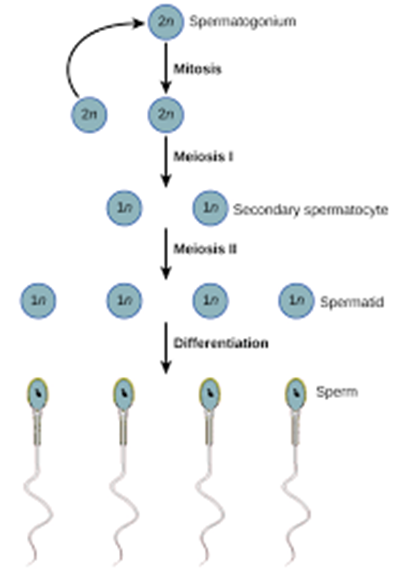Which of the following is attached at bone joints and reduces friction?
Cartilage
Tendon
Fibrillin
Osteocytes
The Correct Answer is A
a. Cartilage: Cartilage is a type of connective tissue found at the ends of bones in joints. It provides a smooth, elastic surface that cushions the bones and reduces friction during movement.
b. Tendon: Tendons are tough, fibrous bands that connect muscles to bones. They do not reduce friction at joints.
c. Fibrillin: Fibrillin is a protein component of connective tissue, but it's not a specific structure like cartilage and doesn't directly reduce friction in joints.
d. Osteocytes: Osteocytes are mature bone cells. They are not located at joints and don't play a role in friction reduction.
Nursing Test Bank
Naxlex Comprehensive Predictor Exams
Related Questions
Correct Answer is D
Explanation
a. Carrying oxygenated blood from the heart to the peripheral tissue: This describes the function of systemic arteries, not the pulmonary artery.
b. Carrying deoxygenated blood from the lungs to the heart: This describes the pulmonary veins, not the pulmonary artery.
c. Carrying oxygenated blood from the lungs to the left side of the heart: This describes the function of the pulmonary veins, not the pulmonary artery.
d. Carrying deoxygenated blood from the right side of the heart to the lungs: Correct. The pulmonary artery carries deoxygenated blood from the right ventricle of the heart to the lungs for oxygenation.
Correct Answer is C
Explanation
a. Spermatozoa: These are the mature male gametes (sperm cells) that result from spermatogenesis but do not describe the process of meiosis itself.
b. Spermiogenesis: This is the final stage of spermatogenesis, where spermatids undergo morphological changes to become mature spermatozoa.
c. Spermatogenesis: This is the process that includes both meiosis and subsequent maturation steps, resulting in the formation of spermatozoa. It involves the production of haploid sperm cells from diploid germ cells.

d. Spermatocytes: These are the cells that undergo meiosis during spermatogenesis. Primary spermatocytes undergo the first meiotic division to form secondary spermatocytes, which then undergo the second meiotic division to produce spermatids.
Whether you are a student looking to ace your exams or a practicing nurse seeking to enhance your expertise , our nursing education contents will empower you with the confidence and competence to make a difference in the lives of patients and become a respected leader in the healthcare field.
Visit Naxlex, invest in your future and unlock endless possibilities with our unparalleled nursing education contents today
Report Wrong Answer on the Current Question
Do you disagree with the answer? If yes, what is your expected answer? Explain.
Kindly be descriptive with the issue you are facing.
